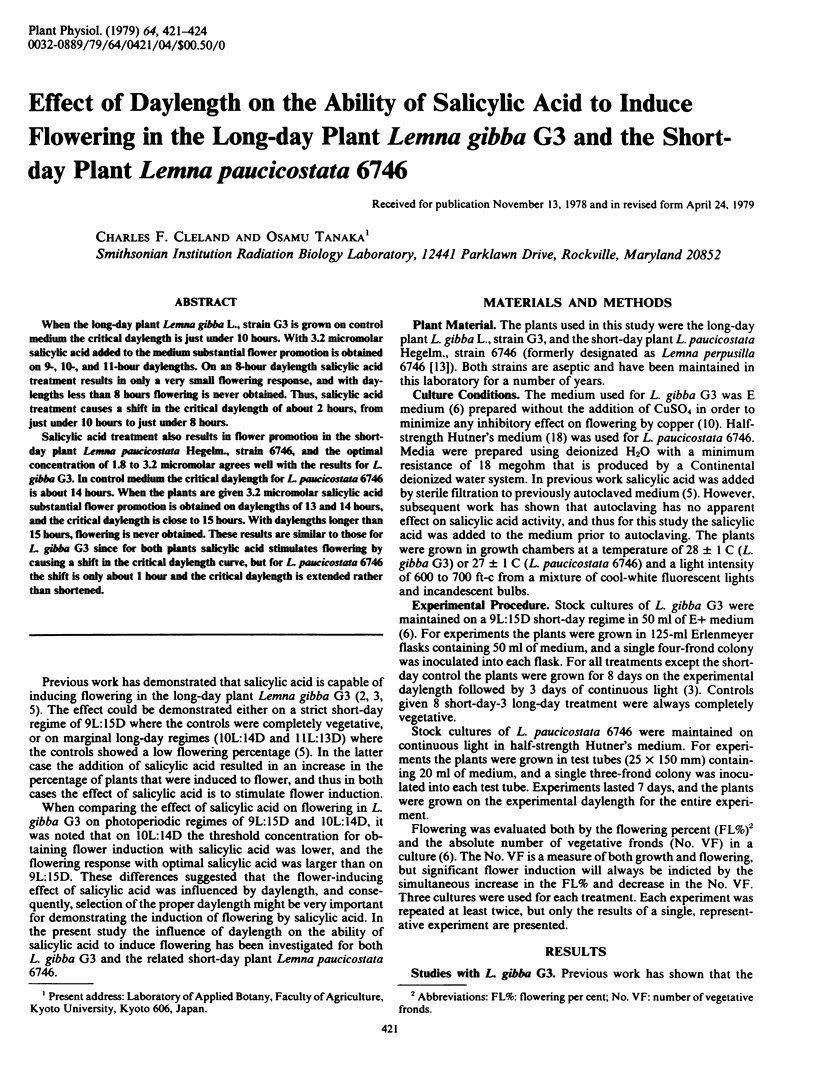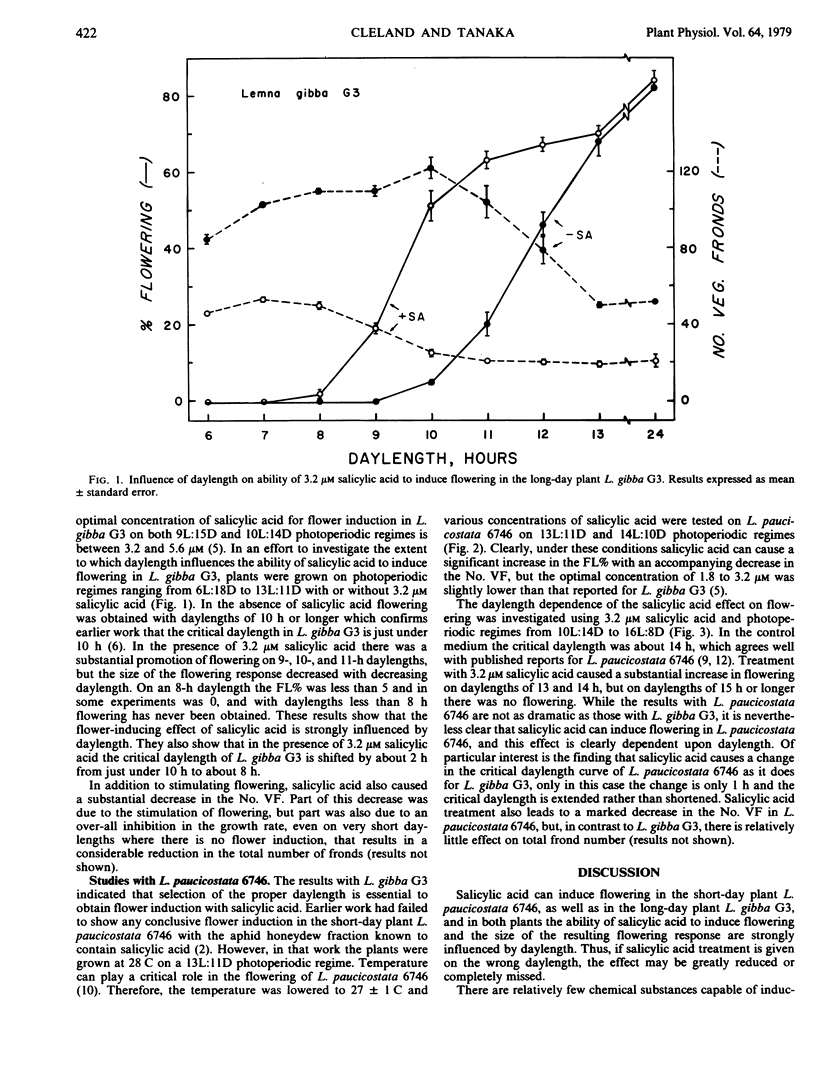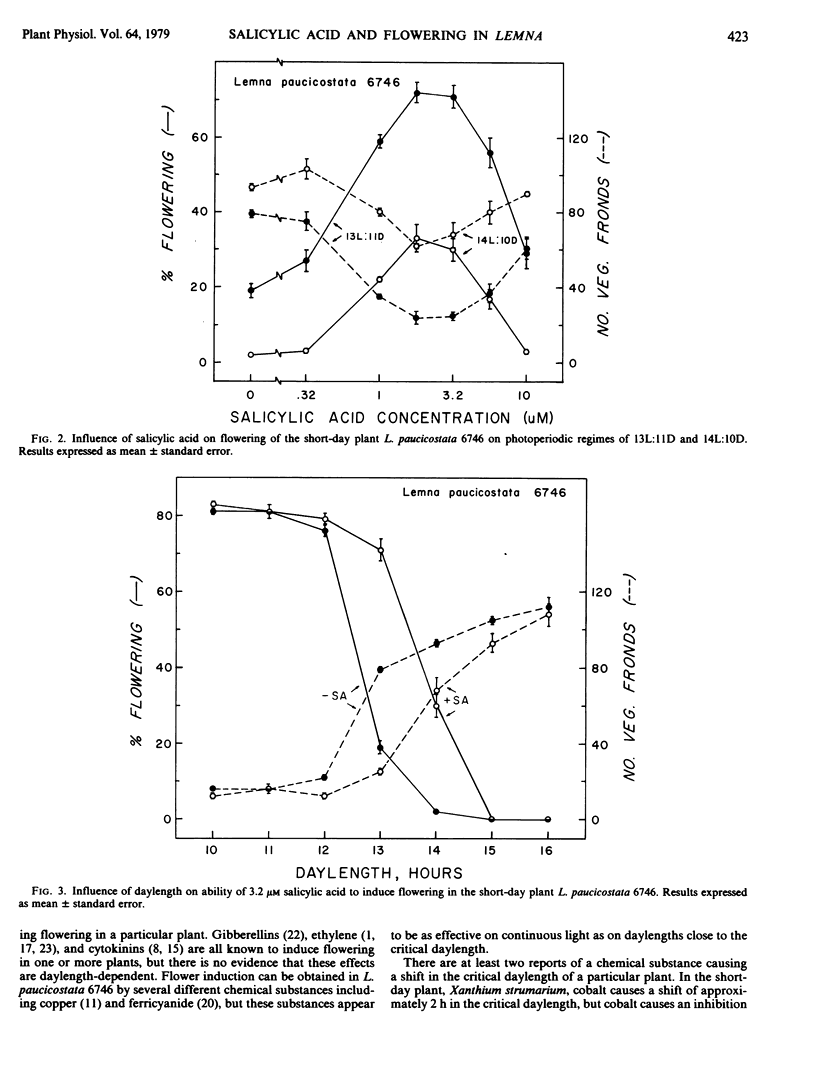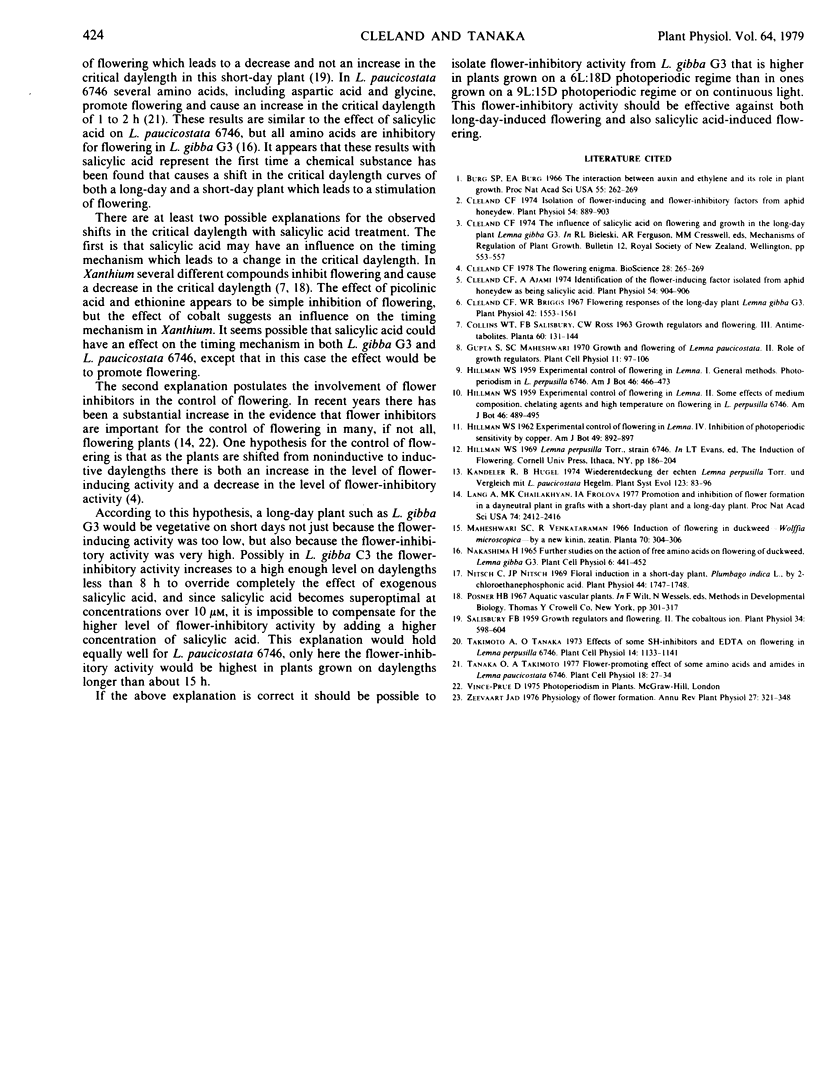Abstract
When the long-day plant Lemna gibba L., strain G3 is grown on control medium the critical daylength is just under 10 hours. With 3.2 micromolar salicylic acid added to the medium substantial flower promotion is obtained on 9-, 10-, and 11-hour daylengths. On an 8-hour daylength salicylic acid treatment results in only a very small flowering response, and with daylengths less than 8 hours flowering is never obtained. Thus, salicylic acid treatment causes a shift in the critical daylength of about 2 hours, from just under 10 hours to just under 8 hours.
Salicylic acid treatment also results in flower promotion in the short-day plant Lemna paucicostata Hegelm., strain 6746, and the optimal concentration of 1.8 to 3.2 micromolar agrees well with the results for L. gibba G3. In control medium the critical daylength for L. paucicostata 6746 is about 14 hours. When the plants are given 3.2 micromolar salicylic acid substantial flower promotion is obtained on daylengths of 13 and 14 hours, and the critical daylength is close to 15 hours. With daylengths longer than 15 hours, flowering is never obtained. These results are similar to those for L. gibba G3 since for both plants salicylic acid stimulates flowering by causing a shift in the critical daylength curve, but for L. paucicostata 6746 the shift is only about 1 hour and the critical daylength is extended rather than shortened.
Full text
PDF



Selected References
These references are in PubMed. This may not be the complete list of references from this article.
- Burg S. P., Burg E. A. The interaction between auxin and ethylene and its role in plant growth. Proc Natl Acad Sci U S A. 1966 Feb;55(2):262–269. doi: 10.1073/pnas.55.2.262. [DOI] [PMC free article] [PubMed] [Google Scholar]
- Cleland C. F., Ajami A. Identification of the Flower-inducing Factor Isolated from Aphid Honeydew as being Salicylic Acid. Plant Physiol. 1974 Dec;54(6):904–906. doi: 10.1104/pp.54.6.904. [DOI] [PMC free article] [PubMed] [Google Scholar]
- Cleland C. F., Briggs W. R. Flowering Responses of the Long-day Plant Lemna gibba G3. Plant Physiol. 1967 Nov;42(11):1553–1561. doi: 10.1104/pp.42.11.1553. [DOI] [PMC free article] [PubMed] [Google Scholar]
- Cleland C. F. Isolation of Flower-inducing and Flower-inhibitory Factors from Aphid Honeydew. Plant Physiol. 1974 Dec;54(6):899–903. doi: 10.1104/pp.54.6.899. [DOI] [PMC free article] [PubMed] [Google Scholar]
- Lang A., Chailakhyan M. K., Frolova I. A. Promotion and inhibition of flower formation in a dayneutral plant in grafts with a short-day plant and a long-day plant. Proc Natl Acad Sci U S A. 1977 Jun;74(6):2412–2416. doi: 10.1073/pnas.74.6.2412. [DOI] [PMC free article] [PubMed] [Google Scholar]
- Nitsch C., Nitsch J. P. Floral Induction in a Short-Day Plant, Plumbago indica L., by 2-Chloroethanephosphonic Acid. Plant Physiol. 1969 Dec;44(12):1747–1748. doi: 10.1104/pp.44.12.1747. [DOI] [PMC free article] [PubMed] [Google Scholar]
- Salisbury F. B. Growth Regulators and Flowering. II. The Cobaltous Ion. Plant Physiol. 1959 Nov;34(6):598–604. doi: 10.1104/pp.34.6.598. [DOI] [PMC free article] [PubMed] [Google Scholar]


